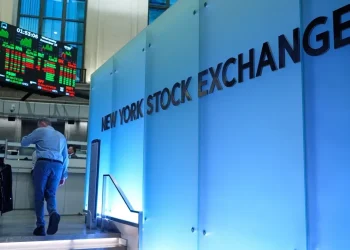Walmart Faces Pressure in China Amid U.S. Tariff Hikes
Caught in the Trade War Crossfire
Walmart is feeling the heat as tensions rise between the United States and China over escalating tariffs. Chinese officials confirmed on Thursday that they had met with executives from the U.S. retail giant following reports that Walmart pressured its Chinese suppliers for discounts to offset the impact of new tariffs imposed by President Donald Trump.
“Our relevant departments have reached out to Walmart to further understand the situation, and the company has provided an explanation,” said He Yongqian, a spokesperson for China’s Commerce Ministry. However, no further details were provided.
Trump’s Tariff Hike Sparks Backlash
Last week, President Trump doubled tariffs on all Chinese imports, raising them to 20%. In retaliation, China imposed fresh tariffs on U.S. agricultural imports, which took effect on Monday.
Many businesses are struggling to adjust to the rapid shifts in trade policy, with retailers warning of potential price hikes as inflation squeezes consumers. Walmart, the world’s largest retailer, is no exception.
Walmart’s Request for Supplier Discounts
To mitigate the financial strain, Bloomberg reported that Walmart has asked some of its Chinese vendors for price cuts of up to 10%. The move aims to absorb the cost of U.S. levies without significantly raising prices for American consumers.
However, Walmart’s approach has not gone unnoticed by Chinese authorities. On Wednesday, state broadcaster CCTV’s social media platform, Yuyuantantian, posted a warning, stating:
“Walmart’s demand for Chinese suppliers to bear the full tariff burden is unreasonable and disrupts fair competition and international trade order.”
The post also hinted that Chinese authorities could take further action if Walmart continues pressing suppliers for lower prices.
Chinese Suppliers Already Under Pressure
While price negotiations are common in China’s business landscape, Walmart’s request comes at a time when many Chinese manufacturers are already struggling with thin profit margins. Increased production costs and supply chain disruptions have made it challenging for suppliers to offer additional discounts.
In a statement to CNN, Walmart defended its actions, stating:
“Our goal is to help people save money and live better. Our conversations with suppliers are aimed at making that a reality for millions of customers. We will continue to work closely with them to navigate these uncertain times.”
Walmart’s Significant Presence in China
Walmart is not just a major U.S. retailer sourcing products from China—it also has a thriving business within the country. The company entered China in 1996 and opened its first superstore and Sam’s Club in Shenzhen.
Today, Walmart operates in more than 100 Chinese cities. In its most recent financial year, the company reported a 16% increase in net sales, reaching $17 billion in China.
What’s Next?
As the U.S.-China trade war intensifies, Walmart’s operations in both countries remain vulnerable to ongoing tensions. If Chinese authorities decide to take action against the retailer, Walmart could face further challenges in its supply chain and market position.
For now, Walmart is walking a tightrope—balancing its relationship with Chinese suppliers while trying to shield American consumers from rising prices.
This article was rewritten by JournosNews.com based on verified reporting from trusted sources. The content has been independently reviewed, fact-checked, and edited for accuracy, neutrality, tone, and global readability in accordance with Google News and AdSense standards.
All opinions, quotes, or statements from contributors, experts, or sourced organizations do not necessarily reflect the views of JournosNews.com. JournosNews.com maintains full editorial independence from any external funders, sponsors, or organizations.
Stay informed with JournosNews.com — your trusted source for verified global reporting and in-depth analysis. Follow us on Google News, BlueSky, and X for real-time updates.














